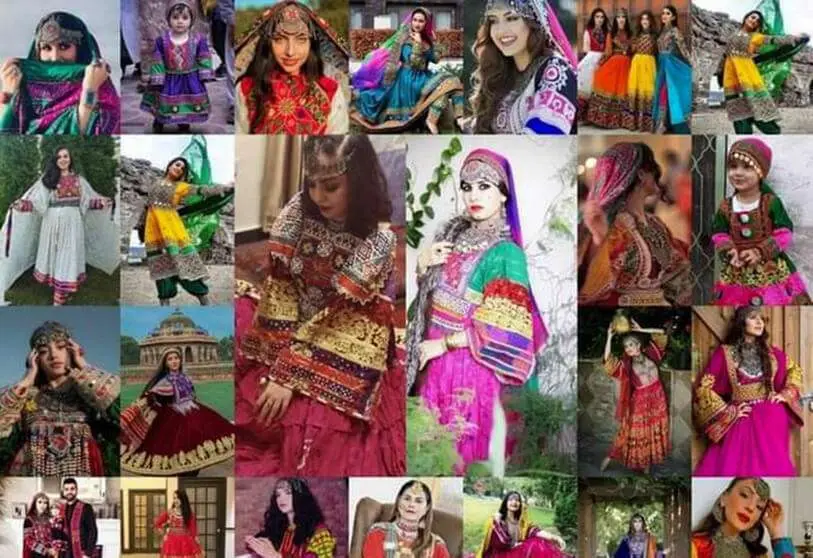Afghan women reclaim their freedom through a social media campaign

Afghan women continue to protest against the Taliban regime and its restrictions. The new Taliban regime, deeply sexist, is based on a strict interpretation of Islamic law that makes women's presence in any public space invisible and thus minimises their identity.
Despite the fact that during the 20 years of US presence in Afghanistan women's progress was slow and did not take place in the same way in urban and rural areas, women achieved a series of basic rights such as access to education, work or not being obliged to wear a burqa. Now with the Taliban presence, women's rights have been reduced to nothing and are directly dependent on the orders of the insurgents.

One of the examples of the most restrictive measures implemented by the Taliban are the dress codes, which dictate that women must cover their bodies from head to toe. In addition, the law prohibits the use of cosmetics or perfume, forbids the wearing of any kind of brightly coloured clothing, and the clothing must be loose-fitting. It also prohibits the wearing of high heels and stipulates that if women wear the burqa and show their ankles, they will be flogged in public.
For this reason, several Afghan women have led a campaign in networks spreading images with colourful traditional dresses of Afghanistan in order to highlight the true cultural richness of the country. Under the hashtags #DoNotTouchMyClothes and #AfghanistanCulture, the women are trying to reclaim their freedom through the traditional dress of their country, far from the sobriety and rigidity of the burqa, a garment that reveals the woman's eyes through a discreet grid.

The images seen on social media show handmade embroidered dresses in colourful designs, with small mirrors placed around the skirts and the upper part. The skirts have a wide flounce that allows the dress to show off when the women dance the Attan, the traditional Afghan dance performed in group circles in which the women twirl around themselves.
In contrast to this protest, a group of women at Kabul University wearing the traditional habayas imposed by the Taliban in an act of support for the new regime was a surprising sight. In videos released by the women themselves, some of them claimed that those women wearing make-up "do not represent the Afghan Muslim woman" and showed their rejection of "the rights of foreign women in disagreement with the Shari'a".

However, this act has been responded to by dozens of Afghan women who joined the campaign initiated by American University of Afghanistan professor Bahar Jalali, who said that the new impositions are not part of "our identity". She said she started the campaign because one of her "biggest concerns is that Afghanistan's identity and sovereignty are under attack".
Similarly, an Afghan researcher named Lima Halima Ahmad said on Twitter that she decided to post a photo of herself in traditional dress "because we are Afghan women, we wear our culture with pride and we think that a terrorist group cannot define our identity. Our culture is not dark, it is not black and white. It is colourful and there is beauty, art, craftsmanship and identity"

Alongside Ahmad, an Afghan woman named Nazmi told the media that when she grew up in her village, "the wearing of either black or blue burqa was not customary at all, and women wore their Afghan cultural clothes. While older women wore black headscarves, younger women wore colourful shawls. And they shook hands with the men".
Journalist Waslat Hasrat-Nazimi, meanwhile, posted a photo of herself in traditional dress on her Twitter account, saying that "this is Afghan culture and this is what women's dress is like".

However, it should be noted that many of these women are outside Afghanistan and that women-led demonstrations on Afghan soil have been harshly repressed by the Taliban. In the protests, women have tried to assert their rights, but many of them have been harassed.
Given the lack of freedom in Afghanistan, a recent survey showed that a record 41% of Afghan men wanted to leave Afghanistan. This percentage rises to almost 50 % for women. However, leaving Afghanistan is a difficult task as many women, who do not have higher education, fear that they will not be able to find work outside their borders, so if they decide to leave they risk it all.

Afghanistan is now ranked as one of the most dangerous countries for women, followed by the Democratic Republic of Congo, Pakistan, India and Somalia. In this sense, the European Union together with the United States have shown their concern for the situation that Afghan women are living and asked the Taliban, the same people who dictate the strict and radical laws that women must comply with, "to avoid all forms of discrimination and abuse (...) Afghan women must live in safety and dignity. All forms of discrimination and abuse against her must be prevented".
The international community has already expressed its "readiness to help women with humanitarian aid and support so that their voices can be heard". However, the United States or the European Union already recognise the Taliban regime "de facto", a regime that necessarily means the curtailment of women's freedom and their oppression.









